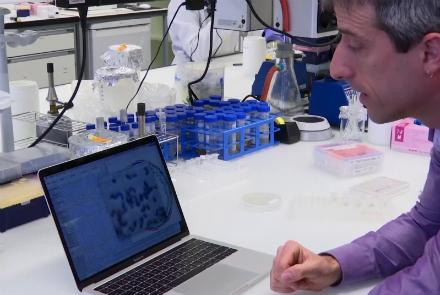Scientists at the Swiss university ETH Zurich say they have used a computer to recreate an organism.
Lead scientist Professor Beat Christen who leads experimental biology here says: "If you take a natural genome sequence and you want to produce it through chemical synthesis this is very challenging and so we used a computer algorithm to simplify this natural genome sequence and rewrite the sequence into an artificial sequence of DNA letters that are easier to manufacture."
According to Christen, the process researchers are using here is easier than trying to copy a whole genome.
The computer picked out essential duplicating pairs of DNAs to make up the genome. The organism used by Christen is a freshwater bacteria called Caulobacter crescents.
“This is the model organism Caulobacter crescents. It's a freshwater organism and we used the natural genome of Caulobacter to feed into our algorithm to produce than the rewritten genome of Caulobacter enthesis,” he says.
The synthetic genome they created Caulobacter enthesis-2.0, does not contain all the DNA that the natural organism would have.
They successfully replicated 580 of the original 680 genes in the organism, the remaining 100 are faulty.
“So to have a fully operational cell you would need every gene to work perfectly. And in the current design, we have roughly a hundred design flaws and these design flaws are very interesting. Also, from the fundamental research perspective. They show us all the gaps in our knowledge,” he says.
According to Beat Christen, if you can write an entire microbial genome there are many applications.
“For instance, you could think about producing a genome to make a synthetic cell that would produce vitamins, or you can think about that you can produce a tailor-made microbe that we produce complex chemicals that can be used in therapies. Another application that can be foreseen is that you produce synthetic genomes and use them as DNA vaccines,” Christen said.
Matthias Christen too believes the research will be useful in creating medicines.
“The huge benefit of designing synthetic bacteria is that you have the control what you want to create. It means with a biotechnological application you can design every part of this complex machine which a seller is to make vitamins, to make therapeutics and so on. And in these perspectives, a fully designed cell has better performance. So that means it has to eat fewer nutrients to produce the same amount to get the same number of vitamins or therapeutics,” he says.
Scientists have previously created synthetic bacteria with a smaller genetic code in a lab, but this the first time a computer algorithm has been used to create an organism.

